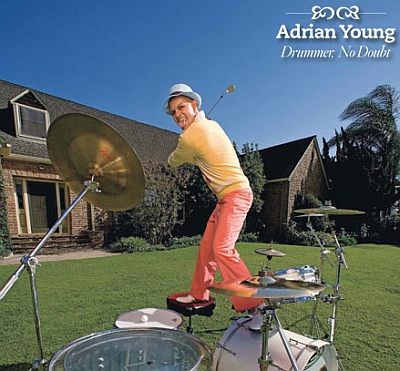How To Get To Carnegie Hall
October 27th, 2009A few weeks ago I passed a pleasant afternoon watching the young Japanese golf pro, Ryo Ishikawa scoring one birdie after another in the President’s Cup matches. I couldn’t help thinking: “Hasn’t anyone told this kid that this game is hard?” Simultaneously, the friend with whom I was watching, said aloud “I imagine he’s done a fair amount of practicing.”

Photo courtesy Golf Digest
And of course, Ryo Ishikawa has. This young fellow was earning ten million dollars a year in endorsements during his senior year of high school.
Of course I couldn’t help thinking about my own golf game and how just a few months earlier I’d realized that I could do with a little practice myself. But that afternoon in front of the TV, I had a revelation and it was that I’ve probably forgotten more about practicing than whatever this eighteen year-old prodigy has had time to learn, even though our professional disciplines are fairways apart. As a former professional musician who’s played drums in a lot of orchestra pits on Broadway, I know a lot about practice.
Until I actually got started, though, what I hadn’t put together was that the practice regimen I’d learned over many years, most of it in cramped, poorly ventilated, sound-proof rooms, would serve me just as well under an open sky at the driving range. This summer I decided to consciously apply the principles I’d learned in music school to the re-learning of the golf swing.
Recognizing that I’d developed so many bad habits swinging a golf club that it would be too difficult to attack them one at a time, I knew I had to start from scratch. My swing needed a complete overhaul.
So I’ve drawn on my years of music study to rebuild my swing. Along the way, I’ve learned a few things:
• You cannot improve your game—even a little bit—if you don’t practice.
But the good news there is that you don’t need to spend hours—and money—at a driving range; you can practice by simply swinging a club at home. If you can find a large mirror, or a reflective sliding glass door in a safe location, you can watch yourself set up to an imaginary ball—you may be surprised at what you see—and you can swing a club endlessly on the proper swing path without ever reaching the bottom of a bucket of balls.
• You must never practice your mistakes.
How many times have you been at a driving range and watched someone beat the daylights out of fifty or a hundred balls, none of which went straight…and some of which never became airborne? You saw a pattern emerge: slice, hook, fat shot, thin shot…. The hapless duffer hadn’t swung the club the same way twice though he’d gone through an entire bucket.
Even Vladimir Horowitz didn’t get it right the first time he tried to play an unfamiliar piece of music, so how can we lesser mortals ever hope to reach a point of satisfaction? We can emulate Horowitz, who played the difficult passages at a slower tempo until he felt comfortable. You should…
• Practice your swing only as fast as you can do it correctly.
We’re way beyond the days when Ben Hogan’s Five Lessons was the definitive statement about the golf swing (and back then woods were indeed made from wood). Today the Internet is a treasure trove of golf education. If you want to address the ball properly, Tiger’s swing coach, Hank Haney, is online and will teach you—free of charge. Want to develop a wide back-swing like Davis Love III’s? David Ledbetter will show you how. You can spend hours watching Ernie Els, Vijay Singh, and Fred Couples hit them over the moon with what appears to be no effort at all, but eventually YOU need to put down the remote and get of the sofa to practice. And you must do it correctly.
So like Vladimir Horowitz when he had to tackle a difficult passage, you must slow down to the point at which you can get it right. And you must repeat the correct motions over and over until they are automatic, until you are no longer able to do it incorrectly. You didn’t acquire those bad habits overnight, and you may even have compensated for your slice or hook to be able to play reasonably well. But starting over and adhering to slow, methodical practice—in tempo and free of tension—will pay handsome rewards when you take it back to the golf course.
• Practice in tempo.
Even a musical speed-demon like Lang Lang needs to go slowly the first time he sight-reads a new piece of music. But he’ll do it in tempo and “work it up.” This is as applicable to golf as it is to the piano.
A good golf swing has a clear and distinct tempo. As you go about your practice routine, be mindful of your own rhythm. Again, Ernie Els and Fred Couples look positively lazy when they swing a golf club but each has his own clearly discernible tempo. Arnold Palmer and Lee Trevino used to yank the club back and lunge through the ball faster than the blink of an eye but they, too, did it in tempo.
Some instructors suggest counting, “one-thousand-one, one-thousand-two, one-thousand-three,” with “one” being the start of the backswing and “three” being the moment of impact. Some recommend humming throughout the swing, while others suggest inhaling deeply on the backswing and exhaling through the mouth on the downswing. Just remember, if at any point your breathing isn’t smooth, you’re slipping out of tempo.
• You must free your body of tension.
When Jack Nicklaus was taking the golf world by storm, a sportswriter clumsily declared that the golfer was a “Power Hitter.” Certainly Mr. Nicklaus was very fit and athletic, but power in the golf swing derives from the coordinated turning of the hips, torso, and shoulders to develop clubhead speed. Golf is not a game of power but, rather, of centrifugal force.
So if you’re gripping the club too tightly, or trying to hit the ball with the power of your arms, you’re creating tension and sacrificing clubhead speed.
One of the best drills I’ve found for taking a relaxed swing is called the “half swing,” or “nine to three” drill. (Dave Pelz extolls the virtue of the “nine o’clock swing” for wedge play, too.)
Assume your normal stance to address the ball. Then, turning your shoulders and maintaining a very light grip on the club, bring the club back so that your arms are parallel to the ground (9 on a clock face). Next, hinge your wrists upward so the club is perpendicular to the ground.
When you’ve reached 9 o’clock, turn your shoulders back, let your arms fall through and swing back so your arms are parallel to the ground on the opposite side of your body (3 on a clock face). Now, hinge the wrists again so the club is perpendicular to the ground. Note that most of your weight should now be on your outside foot.
It’s a lot to keep in mind, so if you feel any tension at any point in this exercise, slow down—but stay in tempo. Just relax and feel the centrifugal force of the clubhead.
As you continue to do this exercise you’ll discover some amazing things: Your body—without any coaching—begins to move exactly as it should, limbs and weight moving in exactly the proper sequence. On the backswing, you’ll feel your weight transfer naturally to your back foot. On the downswing, you’ll feel your shoulders turn just when they should, and you’ll arrive at the finish position in perfect balance with most of your weight on your outside foot. Remarkable. Do this exercise for about five minutes per day and you’ll experience some wonderful results.
If they’re anything like mine, you’ll discover that you’ve stopped hitting the ball fat or thin. You’ll derive a quiet satisfaction from hitting crisp iron shots. Your ball will be on the green (or at least in the same zipcode) in two or three shots—instead of five or six. With each round, your passion for the game will only increase.
Of course, there is that tawdry business about your short game, but take your successes as they come. One side benefit of practice is that you’ll develop an appreciation for the touring pros whose post-match assessments are reminiscent of Alan Greenspan’s statements on the economy. Even if you never understood Greenspeak, you’ll know what a golf pro means when he says, “My score didn’t reflect the quality of my shotmaking today”
But you will be a better golfer.



